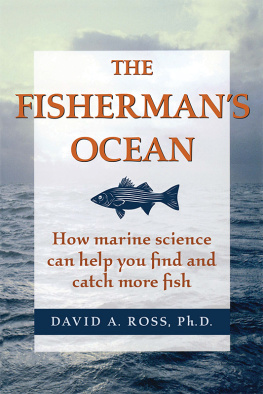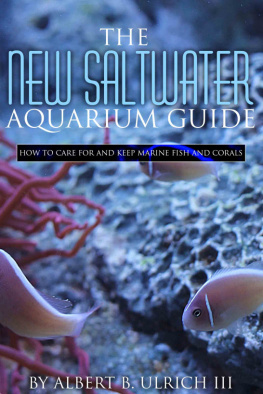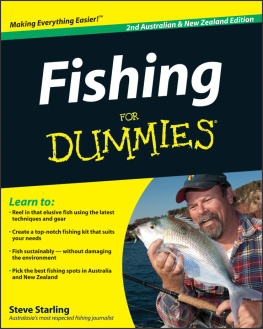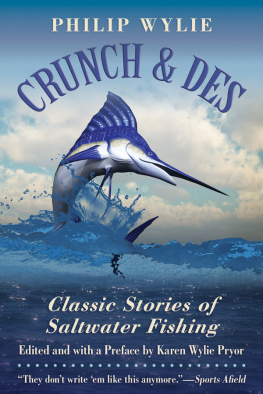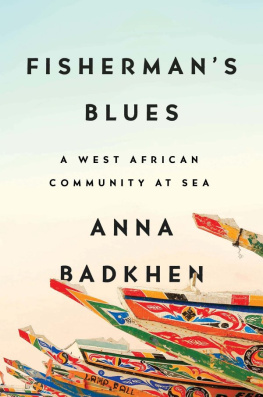Index
Page numbers in italics refer to illustrations
Abundance cycles,
Acquired behavior,
Adaptation to marine environment,
Aerial photographs,
Agnatha, see Jawless fish
Alaska,
Albacore,
vision,
Algal blooms,
Alvin,
Amphidromic point,
Archival tags,
Artificial reefs,
Aspect ratio,
Backwater Fly Fishing in Salt Water,
Baitfish,
evasive behavior,
schools,
sound,
Baja California,
Bar-built estuaries,
Barometric pressure
effects on shallow-water fishing,
effects on tides,
Barracuda,
feeding style,
swimming ability,
Barrier beach,
formation,
Barrier islands,
Bay scallops,
Beaches,
erosion,
Belize,
Benthic realm,
Benthos,
Berms,
Billfish,
fly fishing,
Biochemical reactions,
Biological clock,
Bioluminescence,
Biomass,
Birds,
Blake Plateau,
Blind casting,
Bluefin tuna,
El Nio and,
feeding,
migration,
tagging,
Bluefish,
abundance,
feeding,
schooling,
trolling,
Bluewater Fly Fishing,
Boating techniques,
inside inlets,
Bonefish,
schooling,
temperature,
vision,
Bonito,
feeding,
internal temperature,
schooling,
Bony fish,
Bowls,
British Columbia,
Buoyancy,
Canadian continental margin,
Cape Cod,
Cape Hatteras,
Cape Lookout,
Carbon dioxide,
Cartilaginous fish,
Casting from a boat,
Catfish,
Chesapeake Bay,
tidal currents,
Chimera,
Chlorophyll,
Chondrichthyes, see cartilaginous fish
Chumming,
fly fishing and,
Clam beds,
Classification of ocean life,
Classifying ocean fish,
Clouser Minnow,
Coastline changes,
Cod,
Cold-blooded fish,
Color vision,
Columbia River estuary,
Commensalism,
Commercial fisherman,
Computer tide programs,
Continental borderland,
Continental margin,
Continental rise,
Continental shelf,
Continental slope,
Contrast,
Coral reefs,
fly fishing,
Coriolis effect,
Cortland Line Company,
Countershading,
Critical angle,
Cryptic coloration,
Currents
beneficial aspects,
changes in speed,
channel,
Coriolis effect,
countercurrents,
dead drift,
eddies,
estuary,
fish position,
inlet,
moving nutrients,
nearshore environment,
nonbeneficial aspects,
origin,
working a fly in,
Cusps, , see also Fishing beaches
Dead drift,
Delaware Bay,
Density of water,
Diatoms,
Dinoflagellates,
Disruptive coloration,
Dolphin, , see also Mahimahi
Drowned river valleys,
Ear stone, see Otolith
Earths water supply,
Ebb-tide delta 75
Ecology,
Eddies,
Edges,
Eels,
sound,
El Nio,
effect on fishing,
Eldridge Tide and Pilot Book,
Eldridge Tideware,
Electric fish,
EPIBR,
Estuaries
changes,
common features,
coriolis effect,
definition,
environmental effects on fishing,
fish,
fishing,
fjords,
human impacts,
loss of land,
marine life,
nursery,
nutrients,
origin,
oxygen content,
partially-mixed estuaries,
pollution,
predators,
reverse estuary,
salinity,
salinity-depth profiles,
salt-wedge estuaries,
size,
temperature,
tidal processes and effects,
topographic classification,
types,
types of fish,
U.S. estuary regions,
water flow,
well-mixed estuaries,
wind effects,
Experiments on fish
behavior,
color recognition,
feeding,
lateral line,
light,
scent,
sound
taste,
water temperature changes,
FADs, (Fish Aggregation Devices),
Far-field sound,
Fast-swimming fish,
Fecundity,
Feeding behavior,
feeding stimulation,
feeding styles,
frenzies,
optimal foraging,
Feeding levels,
Fetch,
Fingers,
Fish
age, methods of determining,
anatomical aspects,
appetite,
barbels,
behavior,
blood,
bones,
brain,
caudal fin,
circulation,
classification,
cold blooded,
color and camouflage,
digestive system,
eggs,
evolution,
eyes,
feeding,
fins,
fossils,
gillrakers,
gills,
gonads,
growth rates,
inner ear,
intelligence,
internal clock,
internal fluids,
internal organs,
internal regulation of salt and water,
larvae,
lateral line,
length,
longevity,
memory,
metabolism,
migration,
mortality,
mouth,
muscles,
oxygen,
pain,
polarizing vision,
scales,
shape,
similarity to humans,
size,
skeleton,
skin,
species, number of,
stomach,
swimmbladder,
swimming ability,
vertebrae,
Fish and sound,
Fish distribution,
Fish kills,
Fish length frequency distribution,
Fish migrations
reasons,
Fish senses,
general,
hearing
smell,
taste,
touch
vision,
Fish tagging programs,
Fishing beaches,
bait,
beach profile,
berms,
cusps,
cusps and bowls,
debris,
general characteristics,
identifying structure,
important fishing areas,
longshore bars and troughs,
rip current,
steep and exposed beaches,
storm effects,
structures,
tides and waves,
Fishing cliffs,
Fishing estuaries,
access,
bottom sediment,
channels,
currents,
flies to use,
night fishing,
safety,
structure,
topography,
wading,
Fishing from a boat,
Fishing inlets and jetties,
dead water,
hydraulic currents,
key areas,
night fishing,
safety,
tidal currents,
Fishing inside inlets,
safety,
tidal deltas,
Fishing jetties,
Fishing low-energy areas,
Fishing mangrove areas,
Fishing nearshore waters,
from a boat,
Fishing objects in the water,
Fishing offshore rips,
anchoring techniques,
etiquette,
parachute lures,
positioning boat,
trolling rips
wire lining,
Fishing offshore waters,
boat noise,
chumming,
fly fishing,
full moon,
navigation,
tides and currents,
trolling,
weather,
Fishing rips,
Fishing rocky coastlines,
Fishing salt marshes,
Fishing temperature changes,
fingers,
Fishing the Gulf Stream,
Fishing the surf zone,
beyond the surf zone,
fly fishing techniques,
Fishing tidal flats,
barometric pressure,
casting techniques,
importance of tides, wind, temperature,
spotting fish,
wading techniques,
Fishing tips
being quiet,
color of flies and lures,
feeding behavior,
lure selection,
night vision,
sound,
varying retrieves,
working with the current,
Fishing wrecks and artificial structure,
artificial reefs,

